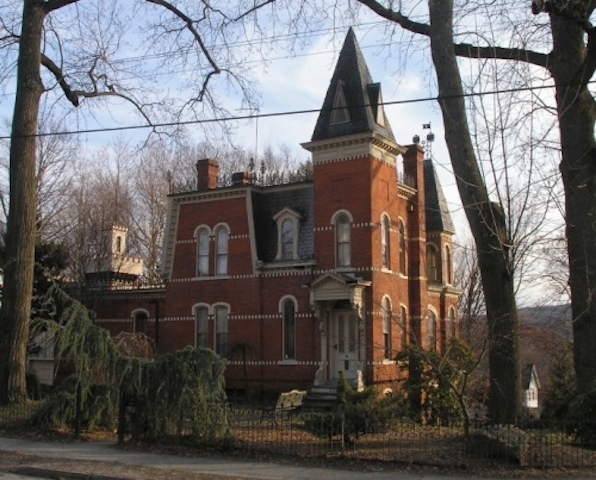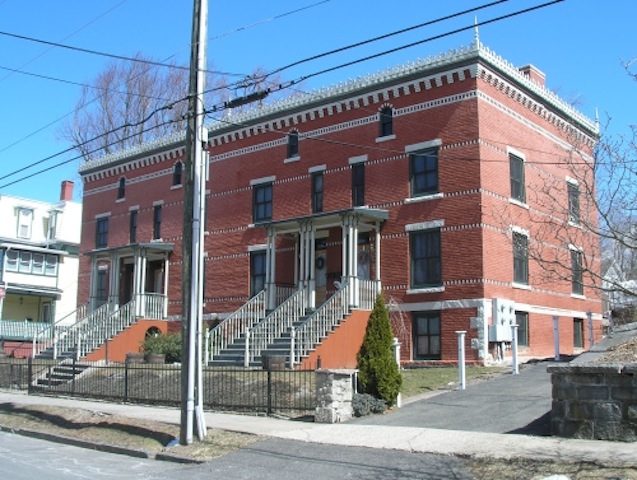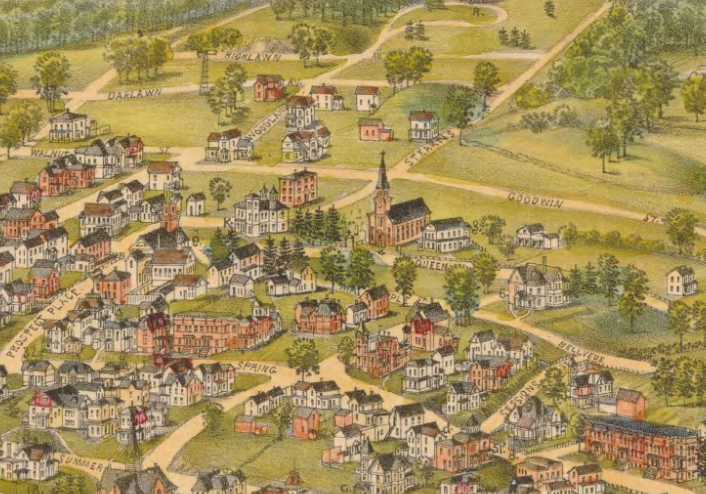By Nancy Finlay
The area in central Connecticut that today makes up the town of Bristol was originally part of the town of Farmington. Due to the distance to Farmington’s town center and the difficulties associated with local travel, residents established a new Congregational church in the Bristol area in 1744. Ten years later, locals built a schoolhouse nearby and this central location developed into a gathering place for farming families. Adjoining public land served as a town green, providing pasture for farm animals and a training ground for the local militia. By the end of the 18th century, a few houses and a tavern emerged near the church and school and the area around the green became known as Federal Hill.
In the early 19th century, Bristol became a bustling manufacturing community, specializing in clocks and tempered steel products. These industries clustered in Bristol’s North and South Villages, while Federal Hill remained primarily residential, acquiring another church and an academy. By the 1870s, Federal Hill emerged as an exclusive address where Bristol’s businessmen and industrialists built large and impressive homes to display their wealth and social standing.
Joel T. Case Helps Shape the Bristol Landscape
Joel T. Case came to Bristol from Barkhamsted in the 1870s and in quick succession built three factories to manufacture water turbines and grinding mills of his own design. He was also the inventor of a new carriage spring and small, mobile ten-horsepower steam engine. In the 1890s, he installed one of his engines in a carriage and actually took it on a successful road test.
Business during the 1880s and 1890s was either boom or bust for Case, so, during slow periods, he began using his factory workers to build houses. During the 1880s he laid out Spring Street and built all the houses on it. By the 1890s, he had built more than 60 buildings in Bristol, many of them on Federal Hill. Gradually Case’s activities as a real estate developer and builder became more important than his work as an inventor and industrialist, and it is what many remember him for today.

Castle Largo, intersection of Center and Main Streets in the Federal Hill area of Bristol, CT – Daniel Sterner, HistoricBuildingsCT.com
Though Case was not a trained architect, he proved familiar with all of the major architectural styles and often combined them in an original and creative manner. Castle Largo, which he built in 1880 at the corner of Center Street and Main Street, is, perhaps, his masterpiece, a little Gothic revival castle with Italianate and Second Empire features. He built houses for A. F. Rockwell and his brother E. D. Rockwell, the founders of the New Departure Manufacturing Company. He also built houses for Morse Richmayer, the owner of the Ideal Laundry, and for Walter E. Strong, owner of the Southside Market. In 1890, he bought the 1794 Abel Lewis tavern, gutted it, and “Victorianized” it, adding porches, dormers, and decorative details that remain to this day.
Threats to Case’s Victorian Architecture
Case died in 1917. By that time, many of Bristol’s rich industrialists had moved farther east, building their mansions in the vicinity of Bradley and Oakland Streets in the neo-Classical, Colonial Revival and Tudor Revival styles. Later owners of Case’s houses did not always appreciate his idiosyncratic style, and over the years, many of them stripped the houses of their Victorian decorations.

The Case Block, at 22-28 Spring Street in Bristol, Connecticut, was built as a row house block of four apartments by the builder architect Joel T. Case – Daniel Sterner, HistoricBuildingsCT.com
By the mid-20th century, many of the houses suffered from neglect and were in danger of being torn down. Fortunately, Bristol residents recognized the historic importance of the neighborhood and began compiling inventories of the area’s historic buildings. By the 1970s, individual houses on Federal Hill began appearing on the National Register of Historic Places. In 1986, the entire area, roughly bounded by Summer, Maple, Woodland, Goodwin, and High Streets, earned a listing as the Federal Hill Historic District, assuring that the work of Joel T. Case and the heart of historic Bristol remained preserved for future generations.
Nancy Finlay grew up in Manchester, Connecticut. She has a BA from Smith College and an MFA and PhD from Princeton University. From 1998 to 2015, she was Curator of Graphics at the Connecticut Historical Society.









